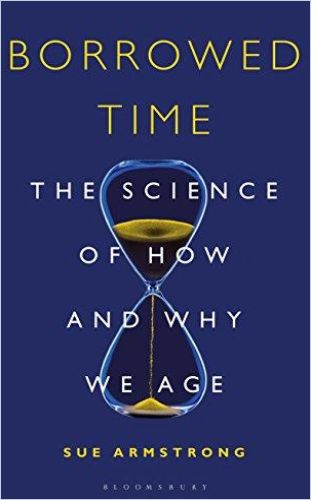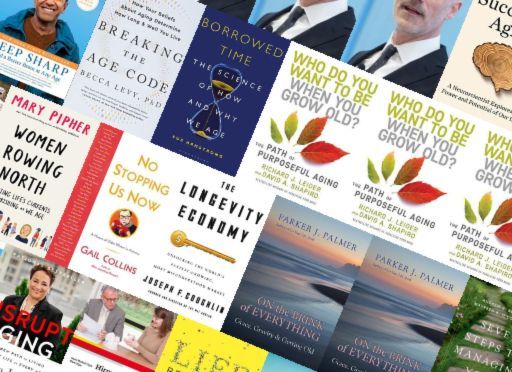Science reporter Sue Armstrong discusses theories of aging and how medical science may slow the aging proces.

Aging and Its processes
Sue Armstrong, author of p53: The Gene That Cracked the Cancer Code, reported on the AIDS pandemic from Africa, Asia and the Caribbean. She has written for many publications, including Science.
Reviewers responded approvingly to her merging of science, biology and history. The Wall Street Journal said, “Ms Armstrong doesn’t pretend that there is any one answer to the question of why we age as we do. The science she presents is a grab bag of divergent theories, each championed by a scientific subspeciality.” The Sunday Times said of her book, “Complex, nuanced and cautious, yet it suggests we are on the brink of a revolution.”
The Aging Process
Armstrong explains that scientists haven’t reached consensus on why organisms age and which mechanism drives the process.
The question of exactly how and why organisms…age has teased scientists for centuries, yet there is still no agreement.Sue Armstrong
The elderly are now the swiftest growing sector of the world’s population, and the author notes that while medical advances have lengthened human lifespan, they haven’t improved health in people’s later years. Armstrong reveals that the latest research suggest that there may be ways to slow the aging process and mitigate its miseries.
Models
Armstrong offers one view: aging results from a lifetime of environmental insults to the body’s cells, tissues and organs. Another theory the author presents involves the random genetic mutations that drive evolution. Mutations that help an organism survive to maturity, she explains, persist in the genes of succeeding generations. But mutations that lower chances of survival will vanish when the person carrying those genes dies.
Lmited Lifespan
Armstrong explains that the discovery that the number of times a cell can divide is limited opened new pathways to understanding the aging process. How do cells know when they’ve reached the limit of their division? Armstrong cites Elizabeth Blackburn, Nobel Prize for Medicine awardee in 2009. Blackburn verified the existence of telomeres – protective tips on the ends of chromosomes.
If [the p53] gene is working properly, it is virtually impossible to get cancer.Sue Armstrong
Each time a cell divides, Armstrong relates, the process “knocks off” a small part of the telomeres. When the telomere cap becomes too small to offer protection to the chromosome, the cell turns senescent.
Cell and Tissue Damage
In older people, Armstrong details, the immune system weakens as the body increases senescent cells. These cells release substances that break down collagen, the structural materical for tissue. Collagen loss, Armstrong reveals, opens space in tissue in which precancerous cells can multiply. Senescent cells help produce chronic inflammation, a main driver, the author says, of age-related decline. Armstrong cites research showing that people who engage in moderate exercise reduce chronic inflammation.
Genes
Armstrong recalls that in 1993, University of California biochemistry professor Cynthia Kenyon discovered that a mutation in the daf-2 gene could double the lifespan of the C. elegans worm. Kenyon’s lab subsequently induced a 10-fold increase in the worms’ longevity. These results, the author underscores, bolster the idea that aging is a directed process and not merely the result of random damage.
Scientists caution, Armstrong reminds readers, that these genes don’t constitute a master key to aging. She underscores that the main influences on lifespan are environmental factors, including chemicals and food.
Treatments.
Armstrong describes how geneticist Gordon Lithgow, who performed some of the earliest worm-longevity experiments, believes aging research is at a similar point as antibiotics were when Alexander Fleming discovered penicillin. It took about 10 years, says Lithgow, between the discovery and the manufacture of the antibiotic.
The promise of anti-aging therapy lies, as for all sophisticated health care procedures, with ‘personalized medicine’ – remedies tailored to us as individuals.Sue Armstrong
The task now, Armstrong believes, is to get those in health care to determine whether diseases like Alzheimer’s, cancer and heart disease spring from a common root cause – the aging process.
Treasure Trove
Armstrong vests deeply in the minutiae of scientific history, theory and practice. She brings a lyrical, easy-to-read voice to these areas, but never quite transcends the jargon-laden complexity of her subject matter. That is, readers with scant interest in science will not find this to be a simple gateway to the world of genetics, lab tests, studies and theories. Those inclined to these areas and curious about the latest views of – and science concerning – aging will find a treasure trove of useful and illuminating information. Armstrong’s approach seems best for students, teachers, science hobbyists and those specifically compelled by – and with some layperson background in – the aging process.
Companion works on age, the aging process and time include Spirals in Time by Helen Scales, The Invention of Yesterday by Tamim Ansary and Hacking Darwin by Jamie Metzl.






